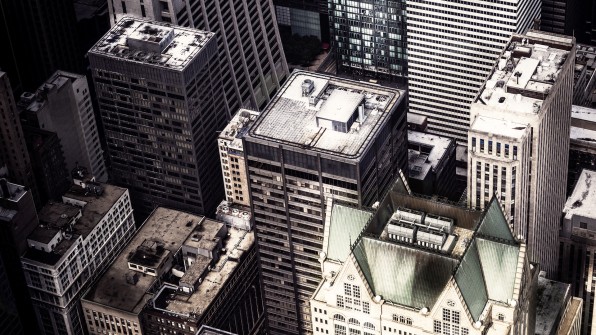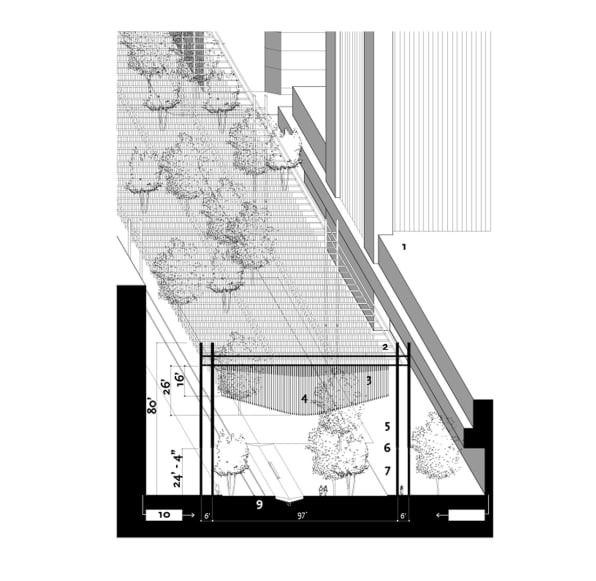Cities will lose billions, and the planet will suffer–but designers could help.
It’s further proof that the battle for the planet will be fought in cities–and that architecture, infrastructure, and urban design will be important weapons against it.
 |
| [Photo: Max Ostrozhinskiy/Unsplash] |
Certain climate change scenarios lend themselves to the imagination. Our brains can easily understand the risks; they’re almost filmic. Storms intensify. Cities heat up. Drought and disease explode. Coastlines are abandoned. Comparatively, financial losses can seem like an afterthought. But as economists piece together a more complex understanding of how climate change will impact the world, they’re raising the alarm.
The latest warning comes from economists from Mexico, the U.K., and the Netherlands, who show that most estimates of the cost of climate change are missing something important: the fact that global warming will be much worse in cities thanks to the urban heat island effect. Not only will cities be much hotter, they’ll pay for it, losing as much as 11% of their GDP in the most extreme cases. And overall, this “local” warming will make global warming worse. Cities need to act now to increase cool roofs, cool asphalt, and other design changes that can dampen the effect, they argue.
In the 1800s, a British scientist named Luke Howard observed that the temperature in London was consistently higher than nearby areas. Today that phenomenon is called the urban heat island effect: Asphalt, dense architecture, energy usage, and a lack of green space all conspire to make cities much warmer than areas nearby–which actually cascades to dramatically alter the weather patterns around cities in general. The effect also compounds climate change in cities, which see hotter temperatures than what the rest of the world experiences.
 |
| [Photo: Vladimir Kudinov/Unsplash] |
In the journal Nature Climate Change, the economists Francisco Estrada, W.J. Wouter Botzen, and Richard S.J. Tol write that this “local” form of climate change will deeply depress the urban economy–and dramatically “amplify” global climate change overall. “Any hard-won victories over climate change on a global scale could be wiped out by the effects of uncontrolled urban heat islands,” Tol said in a University of Sussex statement. The impact is so dramatic, the economic losses from climate change are almost three times worse when the urban heat island effect is included in the model, as opposed to conventional models that don’t consider the effect.
The trio ran an analysis of the 1,692 largest cities in the world under several different future greenhouse gas concentration models, ultimately finding that the hardest-hit cities could lose almost 11% of their GDP by 2100 under the most extreme scenario, with average losses at about 5.6%. For a city like New York, which had a GDP of $1.33 trillion in 2012, an 11% loss could mean roughly $146 billion. For comparison’s sake, that’s almost double the city budget Mayor de Blasio proposed this year, or roughly what China spends on defense every year. The urban heat island effect would make any attempts to mitigate climate change on a global scale (say, through international treaties or large-scale efforts) way less effective. In short, if cities don’t start mitigating the urban heat island effect, they’ll be in big trouble economically very soon, and the rest of the world will suffer, too.
While that’s bad news for just about everyone involved, the economists point out a silver lining: Cities are more nimble and flexible to enact policy than hulking national or international governments. They modeled four different levels of policy that cities could make, and found that mitigating the urban heat island effect on a local level could have major benefits on a global scale. “And even when global efforts fail, we show that local policies can still have a positive impact, making them at least a useful insurance for bad climate outcomes on the international stage,” Tol added.
 |
| [Photo: Maxvis/iStock] |
That includes green roofs and cool roofs, which reflect solar radiation with reflective paint or material, as well as cool pavements, which are made with reflective aggregate to bounce back the sun’s rays. (Expanding green spaces and increasing tree plantings are important, too, they add.)
Some cities are already enacting policy in line with their recommendations: Los Angeles made cool roofs a requirement in 2013, and just last month New York City released guidelines for resilient architecture that include cool roofs and cool pavement, as well as other heat-mitigation designs like bioswales ("...landscape elements designed to concentrate or remove silt and pollution from surface runoff water. They consist of a swaled drainage course with gently sloped sides (less than 6%) and filled with vegetation, compost and/or riprap..."). Meanwhile, many other cities are replacing parking lots with green space and parks. Architects in Phoenix are incorporating heat island-busting canopies into their designs.
 |
| Photo: Co.Design |
ABOUT THE AUTHOR
Kelsey Campbell-Dollaghan is Co.Design's deputy editor
ORIGINAL: FastCoDesign
05.31.17
Comments
Post a Comment